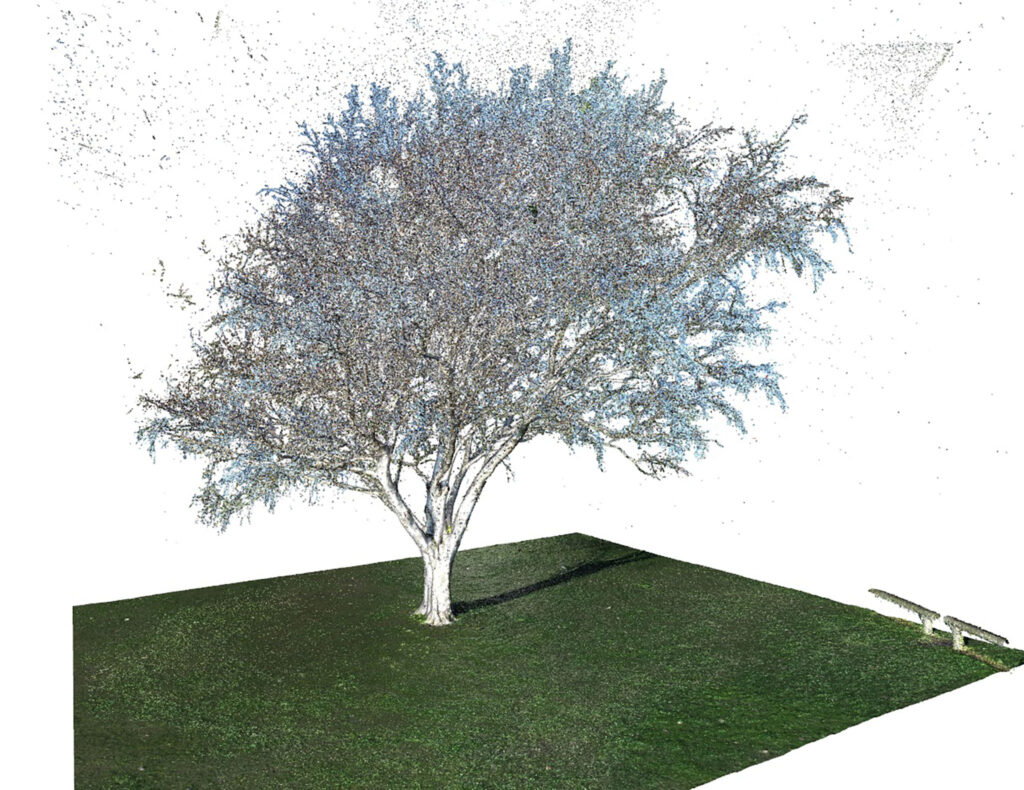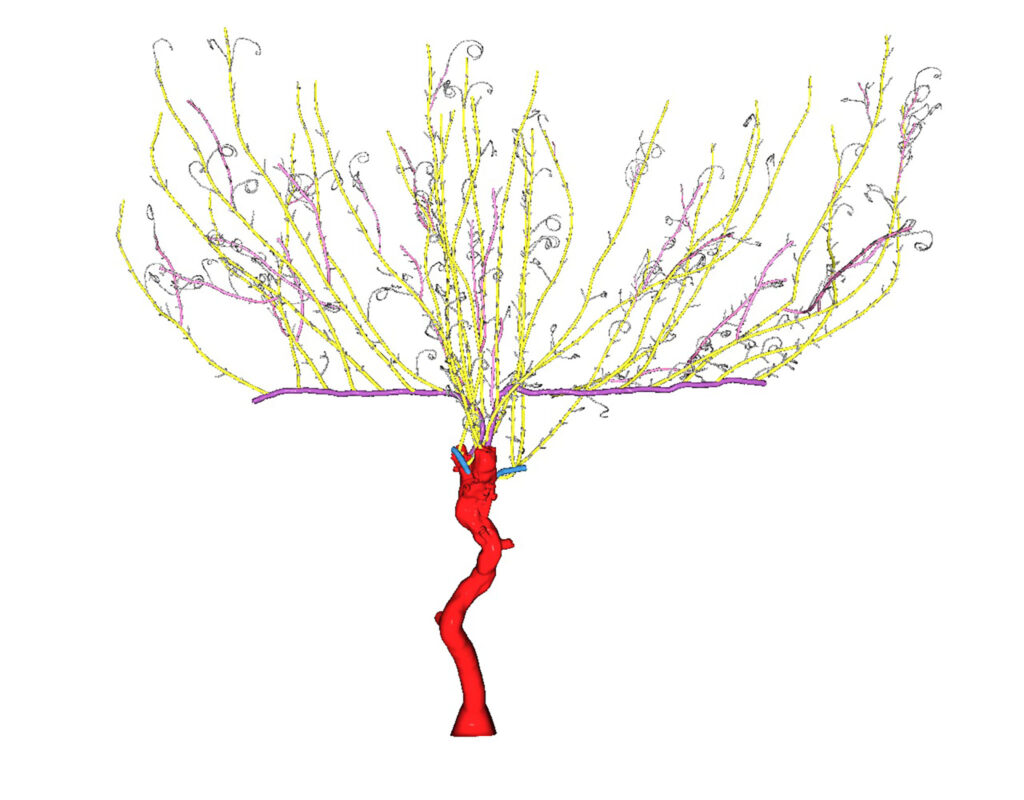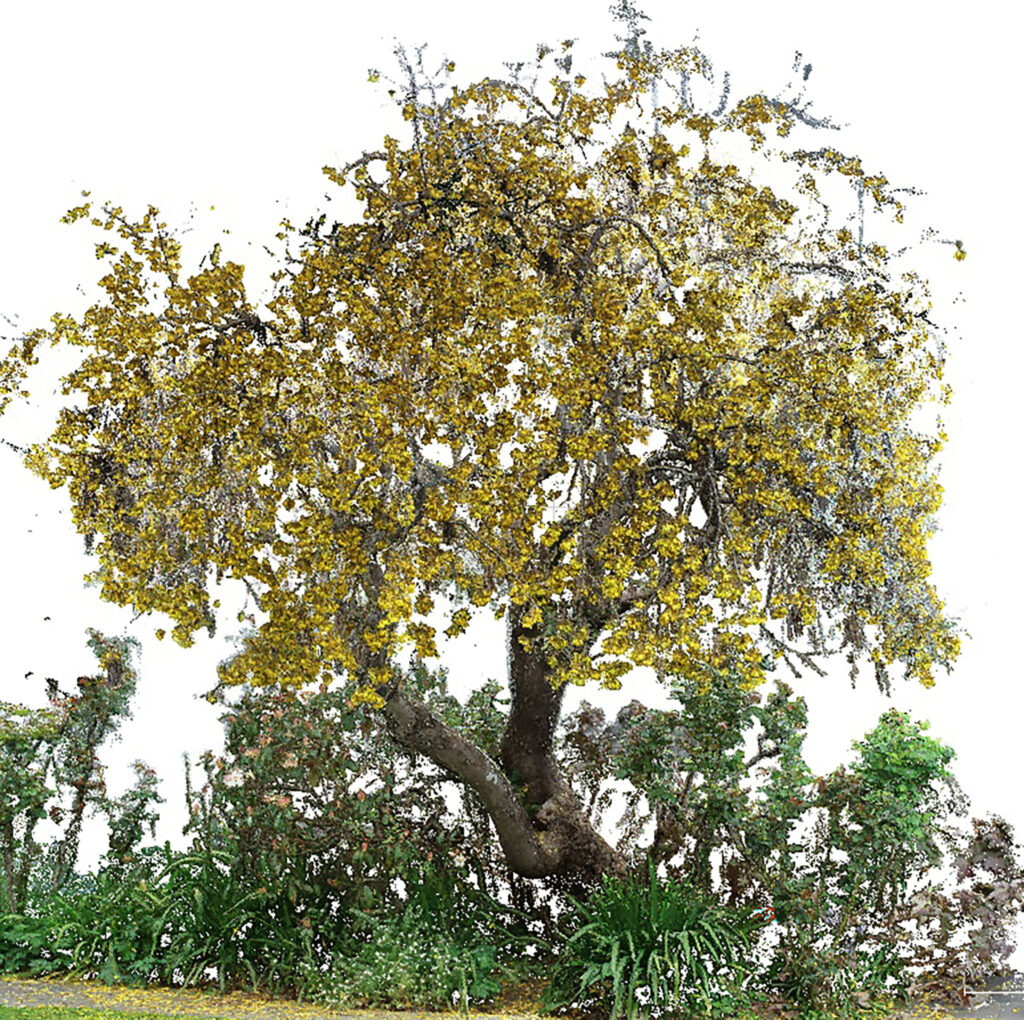Singapore-NZ Data Science Research – Bridging the gap between remote sensing and tree modelling with data science.
This research involves 3D modelling of Trees. A series of images are used to create a 3D model of a tree. Images are taken of trees using a mixture of under canopy photos and drone photography.
Our research team consists of NZ researchers from Manaaki Whenua – Landcare Research (MWLR), Scion, and University of Canterbury (UC), as well as Singapore researchers from the Institute of High-Performance Computing (IHPC, A*STAR) and Nanyang Technological University (NTU).
This model is useful for AgriTech applications such as automated pruning as-well as providing useful parameters (breast height (DBH), tree height, crown width, and branch structure,) to aid in carbon sequestration estimates, growth monitoring and wood estimation. The research aims to push the data science boundary for fully automated tree modelling and will create capabilities for modelling individual tree growth at a national scale, establishing the foundation for large-scale urban planning studies and forestry management practices.
We are focusing on developing a pipeline to automatically generate accurate and detailed tree models from point clouds. Useful metrics will be extractable from these models. These metrics include (but are not limited to) branching topology, bifurcation frequency, colour, bark texture and leaf texture. These metrics will be useful in enabling species classification and monitoring of trees. This will help with maintaining biodiversity and preserving tree health within environments.
The overarching goals for the research are as follows:
• Evaluate the current state-of-the-art skeletonization and reconstruction methods. To understand which approaches are the most successful and their limitations.
• Produce an effective segmentation algorithm, to recover the branching structure from other artefacts such as noise and foliage.
• Improve on the current state-of-the-art skeletonization and reconstruction methods, to develop an automatic pipeline that achieves high geometric and topological accuracy across a wide range of tree species.
• Develop a solution to automatically extract key tree metrics from the model which can then be used to aid the classification and monitoring of tree species.”
Obtaining accurate and detailed point-clouds from trees is a challenging problem. The captured data is incomplete due to the large amount of occlusions that occur in trees. The data is also very noisy, which is further complicated due to the effects of wind – which result in movement in the smaller branches and leaves. Trees also have complicated structures compared to many objects such as buildings and people. Furthermore trees have a huge variability in their structure, density and size. Therefore there is many challenges to overcome to generate tree models from point-clouds, whether they are obtained using Laser-Scanning or photography.
The aim is to complete this project by 2024.




